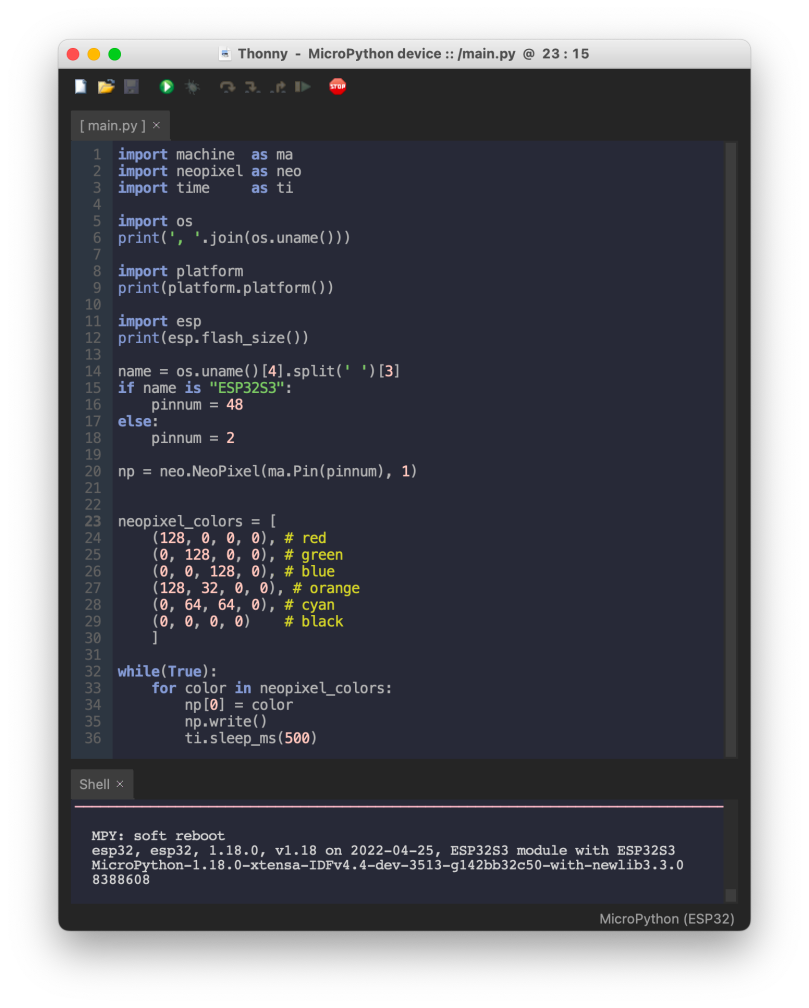I wrote the code in listing 1 for the ESP32-S3, then moved it to the QT PY ESP32-C3. Then I made some minor changes and moved it back to the ESP32-S3-DevKitC-1.
import machine as maimport neopixel as neoimport time as tiimport osprint(', '.join(os.uname()))import platformprint(platform.platform())import espprint(esp.flash_size())name = os.uname()[4].split(' ')[3]if name is "ESP32S3":pinnum = 48else:pinnum = 2np = neo.NeoPixel(ma.Pin(pinnum), 1)neopixel_colors = [(128, 0, 0, 0), # red(0, 128, 0, 0), # green(0, 0, 128, 0), # blue(128, 32, 0, 0), # orange(0, 64, 64, 0), # cyan(0, 0, 0, 0)# black]while(True):for color in neopixel_colors:np[0] = colornp.write()ti.sleep_ms(500)There is no “pretty name” for the RGB LED (or NeoPixel) for either the ESP32-S3 or ESP32-C3 based boards, so I added a simple test to determine what pin to use (see highlighted lines 15-18 in listing 1).
Here’s how it looks in Thonny, with the output of a run in the bottom console output.

I think I’ve flashed enough LEDs for testing with Micropython on these processors. It’s time to move on to something no-trivial and a lot more useful.

You must be logged in to post a comment.